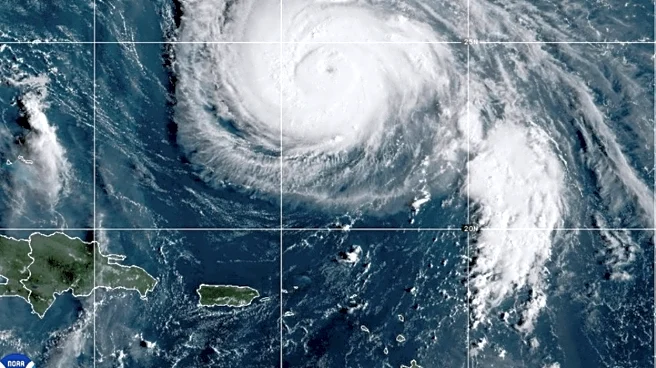What's Happening?
Miami has been identified as the world's most vulnerable real estate bubble by UBS, according to their Global Real Estate Bubble Index. The city, once a pandemic boomtown, is now facing a combination of runaway prices, softening demand, and mounting costs. Miami's bubble risk score of 1.73 is above the high-risk threshold of 1.5, indicating significant volatility. Over the past 15 years, Miami's inflation-adjusted home values have surged faster than any other city in the survey, but this momentum is now faltering. Properties that once sold quickly are now lingering on the market for months, often closing below the asking price. Median sale prices have decreased from $640,000 a year ago to $595,000 in July. The correction is driven by factors such as increased insurance premiums due to climate risks, rising homeowners association fees, and regulatory crackdowns on aging condo towers.
Why It's Important?
The identification of Miami as the world's most vulnerable real estate bubble has significant implications for the U.S. housing market and economy. The city's real estate volatility could lead to broader economic repercussions, affecting homeowners, investors, and the construction industry. The decline in property values and increased costs of ownership may deter potential buyers, impacting the local economy and potentially leading to a decrease in consumer spending. Additionally, the situation in Miami serves as a warning to other cities facing similar risks, highlighting the need for careful monitoring and regulation to prevent abrupt market collapses. The broader impact on Florida's housing market, which has lost over $100 billion in value, underscores the potential for economic instability.
What's Next?
UBS analysts caution that Miami is unlikely to experience an abrupt collapse due to its appeal as a tax-friendly, coastal destination. However, the city's affordability issues are expected to persist, potentially leading to further market corrections. Stakeholders, including real estate developers, investors, and policymakers, may need to address the underlying factors contributing to the bubble risk, such as insurance costs and regulatory challenges. Other global hotspots, including Tokyo and Zurich, are also in the high-risk category, suggesting that similar market dynamics could unfold in these regions. Monitoring these developments will be crucial for anticipating potential shifts in the global real estate market.
Beyond the Headlines
Miami's situation highlights the broader challenges faced by coastal cities in managing real estate bubbles and climate-related risks. The rising insurance premiums tied to climate risks reflect the growing impact of environmental factors on urban planning and real estate markets. This underscores the need for sustainable development practices and climate resilience strategies to mitigate future risks. Additionally, the regulatory crackdowns on aging condo towers point to the importance of infrastructure maintenance and safety standards in preventing market instability. The lessons learned from Miami's experience could inform policy decisions in other cities facing similar challenges.












